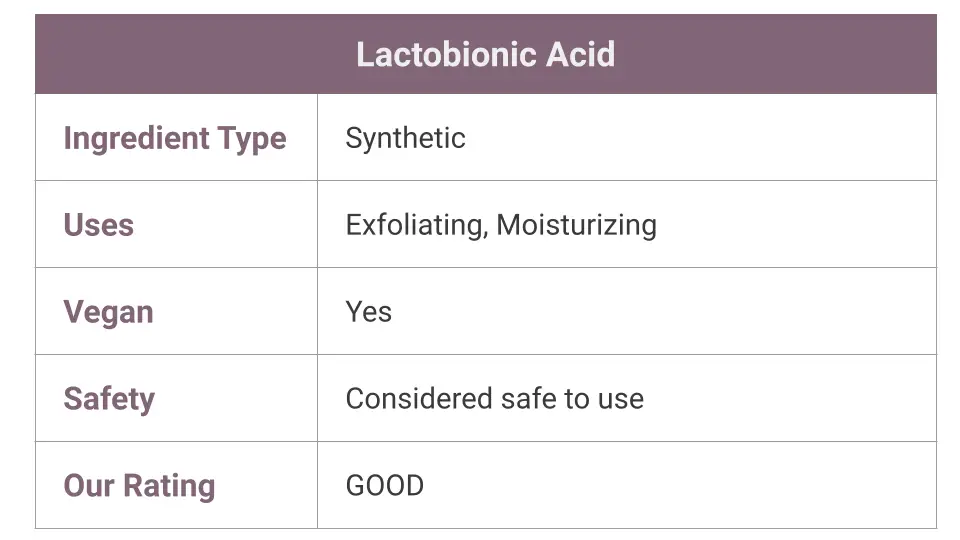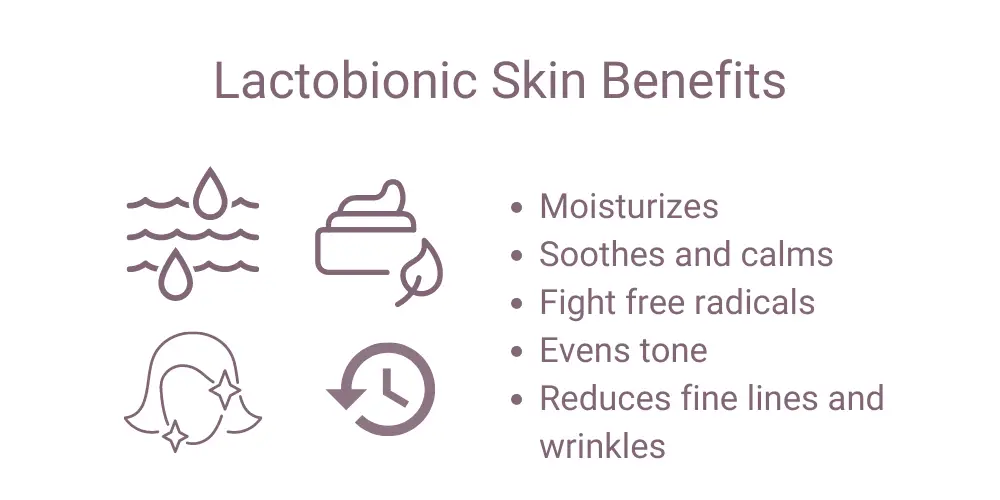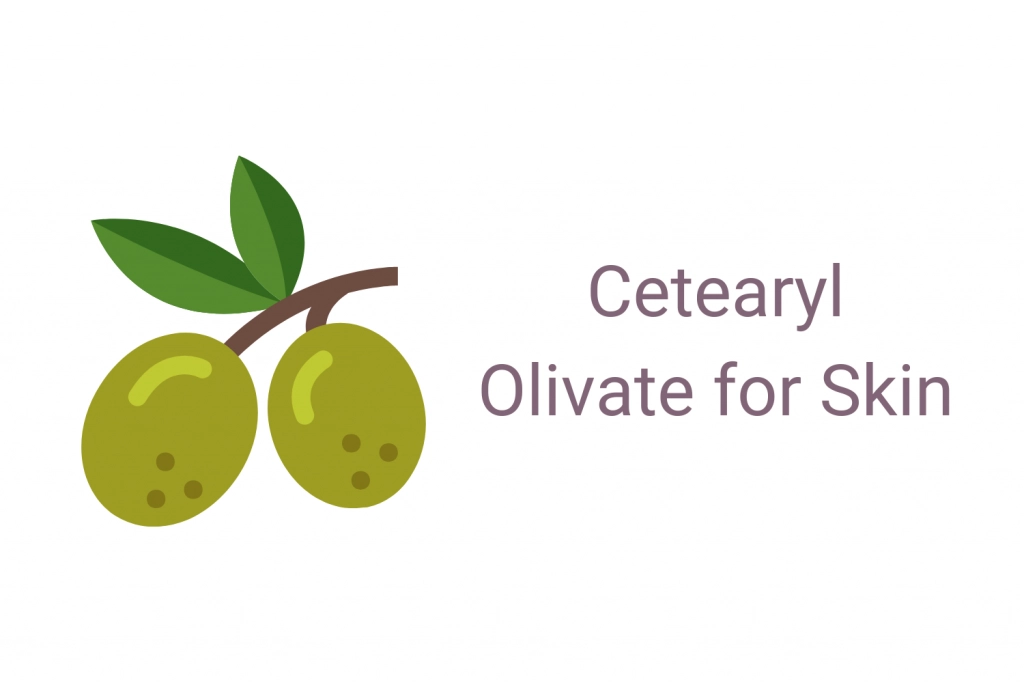It seems every week we learn about a new acid for the skin. This one isn’t an AHA or BHA though! Lactobionic acid offers similar exfoliating benefits but with a gentler approach.
This post may contain affiliate links. Read the full disclosure here
Learn about what makes this ingredient unique and what it could be a great fit for your skin.
What is Lactobionic Acid?

Lactobionic acid is a disaccharide (sugar) that is formed from gluconic acid and galactose. It can also be derived by oxidizing lactose.
Many people are confused by lactobionic acid because lactic acid is also derived from lactose. However, the process of creating lactic acid is different from the process for creating lactobionic acid, and lactic acid is considered to be an alpha-hydroxy acid (AHA), while lactobionic acid is classified in a new category of acids that are called poly-hydroxy acids, PHAs for short.
PHAs are considered to be less irritating than AHAs, making PHAs more ideal to be used in certain products, so that people with sensitive skin will have a reduced chance of experiencing negative reactions.
Lactobionic Skin Benefits and Uses

There are many benefits and uses for lactobionic acid, and this acid has an active role in many popular skincare products.
- Fights free radicals
- Soothes and calms
- Moisturizes
- Even skin tone
- Reduces fine lines and wrinkles
Lactobionic acid is used in numerous beauty products for its ability to perform as an antioxidant. It can also help reduce inflammation by lowering the pH of the skin.
It’s an effective humectant since it extracts moisture from deep in the layers of skin and helps the skin retain moisture. This results in skin that appears more supple and moisturized, without that undesirable greasy feeling.
Lactobionic acid also promotes cell turnover, which helps reduce hyperpigmentation. This acid is effective at lightening dark spots on the skin and it can help reverse the appearance of lines and wrinkles by accelerating the production of collagen.
In addition, lactobionic acid helps with skin thickening, which enables the skin to appear firmer, and its antioxidant properties help to thwart the negative effects of UV rays.
Other Common Uses
In its acid form, lactobionic acid can promote the formation of salts with minerals like zinc, sodium, calcium, and potassium. The fluid used to preserve organs is made from potassium lactobionic, as potassium lactobionic helps to minimize the swelling of cells. Mineral salts are derived from lactobionic acid and are used to make mineral supplements.

Is Lactobionic Safe for the Skin?
Lactobionic acid is considered safe for the skin. It’s a gentler option compared to other exfoliating acids. This ingredient can remove dead skin cells from the surface of the skin without irritation. Many people with sensitive skin seek out products containing lactobionic acid as a safe alternative to other acid-containing products that might cause redness, irritation, dryness, and other unpleasant side effects.
A thorough study has been conducted on lactobionic acid and its safety by dermatologists and published in the Journal of Cosmetic Dermatology, which concluded that not only is this acid safe for use on the skin, but that it’s also very moisturizing without the irritation often seen in other acids.
Lactobionic Acid Comedogenic Rating
Comedogenic refers to an ingredient’s likelihood of clogging the pores of the skin, and there is a special rating scale so consumers can determine which products to purchase and which they should avoid since clogged skin pores are not conducive to healthy skin.
- A comedogenic rating of 0 means that there is no known chance of a product clogging pores.
- A comedogenic rating of 1 means that there is a very slight chance of a product clogging pores.
- A comedogenic rating of 2 means that a majority of people who use a certain product will not experience clogging of the pores, while some may.
- A comedogenic rating of 3 means that pore-clogging may occur, especially in individuals with certain skin types.
- A comedogenic rating of 4 means that pore-clogging will likely occur, especially in those with certain skin types.
- A comedogenic rating of 5 means that pore-clogging will occur in a majority of users.
Lactobionic acid doesn’t have a comedogenic rating. However, its ability to shed off dead skin cells that trap dirt and oil can help unclog pores. This ingredient shouldn’t raise concerns for acne or blemish-prone skin.
Dangers / Irritation
There are really no dangers to report regarding lactobionic acid because this acid was developed as a less irritating alternative to AHAs. In fact, many people who have experienced reactions to products containing AHAs are often able to use products containing lactobionic acid without the same irritations.
It is recommended that lactobionic acid not be combined with other types of acids unless it’s part of a pre-tested mix of acids. In pre-tested mixtures, chemists have already tested the acids to ensure they won’t cause increased skin reactions. However, if you mix lactobionic acids with other acids yourself, you face the possibility of experiencing irritation of the skin because mixing multiple acids can increase your chances of experiencing annoying skin reactions.
Another ingredient that you should refrain from using lactobionic acid with is retinol. Consumers might wrongly believe that they’re increasing their protection against aging, but the chemical reaction between these two ingredients can lead to extreme dryness, redness, and other types of irritation.
You should also only use products containing lactobionic acid once a day so as not to increase the chances of irritation. Retinol can be used with the same skin routine, but just not at the same time as lactobionic acid.
Frequently Asked Questions
Find answers to some of the most frequently asked questions about lactobionic acid.
Is It a Good Ingredient?
All in all, lactobionic acid is a good ingredient that can be safely used in skincare products. It provides a host of benefits that can improve the condition of just about any skin type, even those with very sensitive skin.
Related Articles You Might Like:





